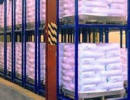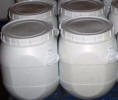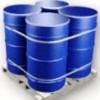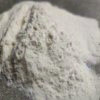Anmol Chemicals is the pioneer manufacturers of Molybdenum Glycinate or Molybdenum Bisglycinate, Pharmaceutical Excipients Chemicals in India. We supply Halal and Kosher Molybdenum Glycinate or Molybdenum Bisglycinate made in an ISO9001, ISO22000 (FSSC22000) and cGMP certified facility. Our group has several manufacturing facilities spread across the world, supported by toll manufacturers and representatives in UAE, Europe, Africa, USA, China and has several associated manufacturing facilities spread across India. All the Information on Physics, Chemistry, Applications, Uses and Technology on Manufacture of Molybdenum Glycinate or Molybdenum Bisglycinate is in these pages. |
| The units have one or more of the certifications like FDA GMP, ISO 9001, ISO 22000, HACCP, REACH, Kosher & Halal |





Molybdenum Glycinate or Molybdenum Bisglycinate SDS of Manufacturers
Molybdenum Glycinate or Molybdenum Bisglycinate Properties and Specifications of Manufacturers
Molybdenum Glycinate or Molybdenum Bisglycinate or Molybdenum Glycine Complex SDS Safety Data Sheet
MSDS Sheet, Material Safety Data Sheet
Section 1. Product Information
Product Name & Other Names: Molybdenum Glycinate or Molybdenum Bisglycinate or Molybdenum Glycine Complex.
CAS No.: NA
EINECS EC Number: NA
Molecular Formula: C6H12MoN3O6
Molecular Weight: 318.12
Relevant uses and uses advised against (if any): Industrial Manufacturing.
Section 2: Hazards Identification
GHS, Globally Harmonized System Classification in accordance with 29 CFR 1910
Classification according to Regulation (EC) No 1272/2008
Reproductive toxicity Category 2 H361
Labeling according GHS & Regulation (EC) No 1272/2008
GHS Label Elements  Health Hazard |
Signal Words: Warning
Hazard statements:
H361 Suspected of damaging fertility or the unborn child.
Precautionary statements:
P202: Do not handle until all safety precautions have been read and understood.
P281: Use personal protective equipment as required.
P304+340: IF INHALED: Remove victim to fresh air and keep at rest in a position comfortable for breathing.
P308+313: IF exposed or concerned: Get medical advice/attention.
P405: Store locked up.
P501: Dispose of contents/container in accordance with local/regional/national/international regulation.
Classification according to EU Directives 67/548/EEC or 1999/45/EC:
Risk Phrases:
R60 May impair fertility.
R63 Possible risk of harm to the unborn child.
Handle carefully. To the best of our knowledge, the chemical, physical, and toxicological properties have not been thoroughly investigated
Section 3: Composition and Information on Ingredients
Product Name & Other Names: Molybdenum Glycinate or Molybdenum Bisglycinate or Molybdenum Glycine Complex.
CAS No.: NA
EINECS EC Number: NA
Section 4. First Aid & Procedure
Always get medical attention after the first aid is over.
Ingestion: Never give anything by mouth to an unconscious person. Get medical attention.
Skin: Immediately flush skin with plenty of water for at least 15 minutes. Remove and wash contaminated clothing and shoes before reuse. Get medical attention if irritation develops.
Eyes: Immediately flush eyes with plenty of water for 15 minutes, occasionally lifting upper and lower eyelids. Hold eyelids apart during irrigation. Get medical attention.
Inhalation: Remove person to fresh air. If breathing is difficult, give oxygen. If not breathing administer artificial respiration. Get medical attention.
Section 5. Fire Fighting Measures
Flash Point: N/A
Fire/Explosion: Not considered to be a fire and explosion hazard.
Extinguishing Medium: Water spray, alcohol-resistant foam, dry chemical or carbon dioxide.
Special hazards arising from the substance or mixture: Carbon oxides may evolve along with molybdenum oxides.
Special Information: In the event of a fire, wear full protective clothing and NIOSH-approved self-contained breathing apparatus with full face piece operated in the pressure demand or other positive pressure mode. At high temperatures under fire conditions, it may produce toxic or irritating fumes. Fire-extinguishing work is done from the windward and the suitable fire-extinguishing method according to the surrounding situation is used. Uninvolved persons should evacuate to a safe place.
Section 6. Spills and Disposals
Personal precautions, protective equipment, and emergency procedures: Avoid breathing dust/fumes/gas/mist/vapors/spray. Ensure adequate ventilation. Use individual protective equipment (waterproof boots, suitable protective clothing, safety glasses, etc.). Restrict unprotected personnel from the area. Prevent any contact with hot surfaces. Do not approach facing the wind. Do not touch the spilled material.
Environmental precautions: Do not let the product enter drains, soil, or water sources.
Methods and materials used for containment Cleanup procedures and Storage: Contain spilled material. Cover with an inert, non-combustible absorbent material, (e.g. sand, earth, diatomaceous earth, vermiculite). Pick up and arrange disposal without creating dust. Vacuum or sweep-up and remove to an approved disposal container.
Section 7. Handling and Storage
Precautions for safe handling: Apply according to good manufacturing and industrial hygiene practices. Ensure proper ventilation. Wash thoroughly after handling. Wash hands before eating. Do not drink, eat, or smoke while handling. Avoid contact with skin, eyes, and clothing. Minimize dust generation. Avoid breathing dust/fumes/gas/mist/vapors/spray. Avoid contact with eyes, skin, and clothing. Keep container tightly closed. Avoid ingestion and inhalation. Use individual protective equipment (waterproof boots, suitable protective clothing, safety glasses, etc.). Prevent any contact with hot surfaces.
Conditions for safe storage, including any incompatibilities: Store in cool, dry, and ventilated area away from heat sources and protected from sunlight in tightly closed original container. Keep air contact to a minimum. Do not leave the material container open. Store protected from heat, sparks and ignition sources and incompatible materials. Avoid contact with skin and eyes. Avoid inhalation of dust/mist/vapor. Do not store with incompatible materials like strong acids, bases, oxidizing agents and strong reducing agents.
Section 8. Exposure Controls & Personal Protection
Exposure Limits: Better keep below 5 mg/m3.
Engineering Controls: Use adequate exhaust ventilation to keep airborne concentrations below the allowable exposure limit.
Ventilation System: A system of local and/or general exhaust is recommended to keep employee exposures as low as possible. Local exhaust ventilation is generally preferred because it can control the emissions of the contaminant at its source, preventing dispersion of it into the general work area.
Personal Respirators (NIOSH Approved): For conditions of use where exposure to dust or mist is apparent and engineering controls are not feasible, a particulate respirator may be worn. For emergencies or instances where the exposure levels are not known, use a full-face positive-pressure, air-supplied respirator.
Skin Protection: Wear protective gloves and clean body-covering clothing.
Eye Protection: Use chemical safety goggles and/or full face shield where dusting or splashing of solutions is possible. Maintain eye wash fountain and quick-drench facilities in work area.
Other Control Measures: Maintain good housekeeping in work area. Dust deposits on floors and other surfaces may pick up moisture and cause the surfaces to become slippery and present safety hazards. Handle in accordance with good industrial hygiene and safety practice. Wash hands after handling.
Section 9. Physical & Chemical Data
Appearance: A fine, free flowing spray dried powder containing amino acids, short chain peptides derived from Molybdenum Salt & Glycine.
Odor: Not available.
Odor threshold: Not available.
pH: Not available.
Relative density: Not available.
Melting point/freezing point: Not available.
Initial boiling point and boiling range: Not available.
Flash point: Not available.
Auto-ignition temperature: Not available.
Decomposition temperature: Not available.
Upper/lower flammability or explosive limits: Not available.
Vapor pressure: Not available.
Vapor density: Not available.
Evaporation rate: Not available.
Flammability (solid, gas): Not available.
Partition coefficient: n-octanol/water: Not available.
Solubility(ies): Not available.
Viscosity: Not available.
Section 10. Stability and Reactivity
Chemical Stability: Stable under recommended temperatures and pressures.
Incompatibility (Materials to Avoid): Strong acids, bases, oxidizing agents and strong reducing agents.
Conditions to Avoid: Incompatible materials, excessive heat.
Hazardous Decomposition Products: Carbon oxides.
Hazardous Polymerization: Will not occur.
Section 11. Toxicological Information
Toxicity to Animals: No data available.
Carcinogenicity: Not listed by ACGIH, IARC, NTP.
The product is suspected of damaging fertility or the unborn child.
To the best of our knowledge, the chemical, physical, and toxicological properties have not been thoroughly investigated.
Section 12. Ecological Information
Results of PBT and vPvB assessment: Not applicable.
Mobility in Soil: No data available.
Environmental Precautions: DO NOT DISCHARGE into drains and rivers.
Section 13. Disposal Suggestions
Dispose of in accordance with all applicable local, state, and federal regulations at an approved waste disposal facility.
Section 14. Transport and Label Information
DOT USA, TDG Canada & ADR/RID Europe: Not dangerous goods
IMDG/IMO: Not dangerous goods
IATA/ICAO: Not dangerous goods
Section 15. Regulatory Information
USA:
SARA 302: No chemicals in this material are subject to the reporting requirements of SARA Title III, Section 302.
Section 16. Other Information
European Labeling in Accordance with EC Directives:
H361 Suspected of damaging fertility or the unborn child.
Disclaimer:
**************************
Our company provides this MSDS sheet in good faith but makes no representation as to its comprehensiveness or accuracy. This Molybdenum Glycinate or Molybdenum Bisglycinate SDS sheet is intended only as a guide to the appropriate precautionary handling of the material by a properly trained person using this product. The above information has been compiled from various sources and has the possibility of discrepancy and being out-dated information. Individuals receiving the information must exercise their independent judgment and do further search in determining its appropriateness for a particular purpose. In no case shall our company be liable to loss or damages by the product user.
**************************
Molybdenum Glycinate or Molybdenum Bisglycinate manufacturers
Anmol Chemicals
S-8, SARIFA MANSION, 2ND FLANK ROAD, CHINCHBUNDER, MUMBAI 400009, INDIA
TEL: (OFFICE) 91-22-23770100, 23726950, 23774610, 23723564. FAX: 91-22-23728264
e-mail: anmolc@mtnl.net.in

Exports to USA, Canada, UAE, Dubai, South Africa, Tanzania, Kenya, Nigeria, Egypt, Uganda, Turkey, Mexico, Brazil, Chile, Argentina, Europe Netherlands, Italy, Spain, Germany, Portugal, France, Malaysia, Indonesia, Thailand, Korea, Vietnam, Japan, etc.
Copyright and Usual Disclaimer is Applicable. 27 December, 2021
Barter
They who love thee on this earth, keep calling on thee and chanting thy beads
Lest thou forgetest.
They assign the credit of their hard work to your blessings
They keep you amused.
They come to thy temple with baskets of fruits, as if you were a glutton
They deny the same to their children.
They offer you milk for a bath and burn the ghee
They hardly understand the meaning of it.
They bring gold and diamonds. They come with beating of drums
They love to advertise their offerings.
They offer you a small bribe as advance for booty, called lottery
They love to dream.